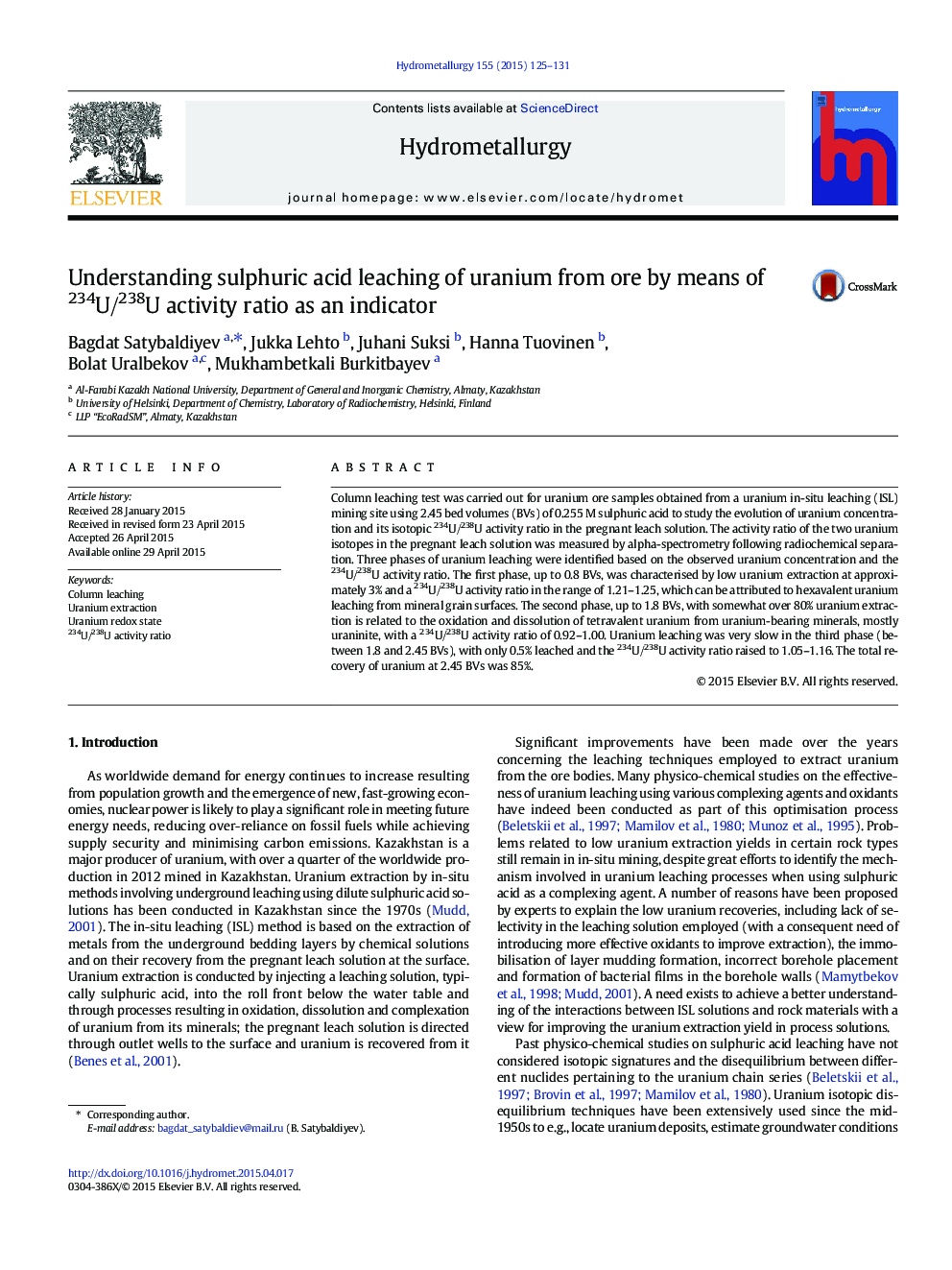| Article ID | Journal | Published Year | Pages | File Type |
|---|---|---|---|---|
| 211929 | Hydrometallurgy | 2015 | 7 Pages |
•Column leaching of uranium with sulphuric acid was carried out.•234U/238U activity ratio was used as an indicator of uranium sources.•Three phases of uranium leaching were identified based on observed 234U/238U activity ratios.
Column leaching test was carried out for uranium ore samples obtained from a uranium in-situ leaching (ISL) mining site using 2.45 bed volumes (BVs) of 0.255 M sulphuric acid to study the evolution of uranium concentration and its isotopic 234U/238U activity ratio in the pregnant leach solution. The activity ratio of the two uranium isotopes in the pregnant leach solution was measured by alpha-spectrometry following radiochemical separation. Three phases of uranium leaching were identified based on the observed uranium concentration and the 234U/238U activity ratio. The first phase, up to 0.8 BVs, was characterised by low uranium extraction at approximately 3% and a 234U/238U activity ratio in the range of 1.21–1.25, which can be attributed to hexavalent uranium leaching from mineral grain surfaces. The second phase, up to 1.8 BVs, with somewhat over 80% uranium extraction is related to the oxidation and dissolution of tetravalent uranium from uranium-bearing minerals, mostly uraninite, with a 234U/238U activity ratio of 0.92–1.00. Uranium leaching was very slow in the third phase (between 1.8 and 2.45 BVs), with only 0.5% leached and the 234U/238U activity ratio raised to 1.05–1.16. The total recovery of uranium at 2.45 BVs was 85%.
Graphical abstractFigure optionsDownload full-size imageDownload as PowerPoint slide
